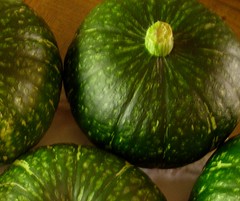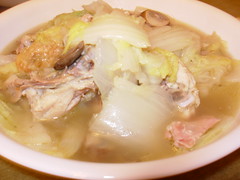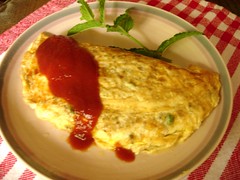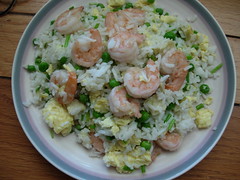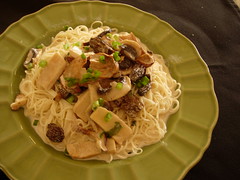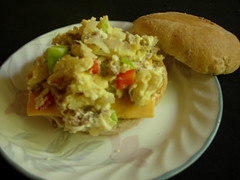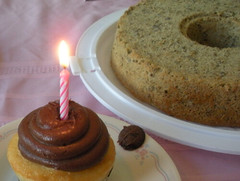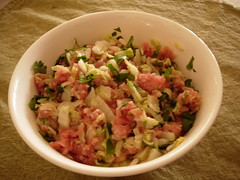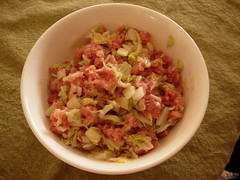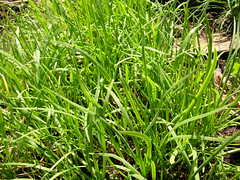

Chinese chives are another popular ingredient in Chinese cooking, as they can be used in many dishes, especially dim sum. They pair with other foods fairly well, such as chicken, pork, fish, shrimp, egg and tofu. There are many different types of dim sum that use Chinese chives, such as dumplings, pot stickers, pork buns and various Cantonese dishes.
Chinese chives are easy to plant and easy to grow. As long as you can get a few chives and plant them a few inches apart, you will get clusters of them after a few years. Due to their fast growth, you will need to divide them every three years or so; otherwise, they will wither and die due to overcrowding. When there is a large harvest, one way to take care of it is to make Chinese chive pockets, which are a very popular dim sum dish among Chinese people, who believe that Chinese chives are good for the body; they have strong energy, especially if haarvest in the early spring, right after the entire winter. The chives are tender and aromatic. They regrow after being harvested, so there is an essentially unlimited supply of them. Due to the strong aroma of Chinese chives, you do not need any meats to create a great taste. There are few people who dislike Chinese chive pockets. There are many methods to improve the taste even more.
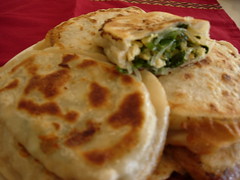 Ingredients (filling)
Ingredients (filling)1. 3 eggs, beaten
2. 1 lb Chinese chives, finely chopped
3. 1-2 pieces of bean curb, finely chopped, or 6 oz. fried tofu
4. 1 pack (2 oz.) of dried
bean threads (also called crystal noodles, among other names)
5. 1/2-1 tsp. salt to taste
6. 4 Tbsp. plus 2 tsp. cooking oil, divided
Directions (filling)1. Fill up a 1-qt. sauce pan with 70% water and bring it to a boil.
2. Soak bean threads in boiled water for a minute.
3. Drain the extra water immediately, rinse the bean threads with cold water and drain again. Finely chop the bean threads.
4. Heat 2 Tbsp. of oil and add beaten eggs. Cook and break up bits of eggs into small size and set aside.
7. Heat remaining 2 Tbsp. oil, add Chinese chives and stir-fry for a minute. Add chopped bean curd, continue stir-frying, stir in the bean threads and put eggs back to pan.
8. Add salt and mix well.
Ingredients and materials (wrap)1. 3 c. all-purpose flour
2. 1/2 c. boiling or very hot water
3. 1/4 c. cold water
4. handful of flour (about 1/4 c.) to prevent sticking during kneading
5. a rolling pin
Directions (wrap)1. Mix the flour with hot water using a fork.
2. Slowly add the remaining water and combine ingredients to a rough dough shape.
3. Put a handful of flour on a table and knead the dough, making sure to add water or flour until you get a smooth consistency.
4. Cover with plastic wrap for about 30 minutes.
5. Divide dough into about 14-16 pieces. Using a rolling pin, make each piece into an oval shape.
Directions (pockets)1. Using a large spoon, scoop filling onto center of wrap.
2. Fold the wrap together towards each other; this should create a "semi-circle."
3. Seal the wrap by pinching with your fingers.
Directions (cooking)1. Put 1 tsp. oil in a large saucepan; turn the pan to evenly distribute the oil.
2. Arrange 7-8 pockets in the pan and cooking using lower medium-high heat. After a few minutes, the bottom will become golden brown.
3. Turn the pockets over and cook until the other side is also golden brown. It is now ready to be served (this part is very important; refer to the tips below for best results).
4. To finish cooking the batch, just repeat step 3.
Tips1. Some people like an even stronger flavor, which can be achieved by adding 2 Tbsp. of tiny dried shrimps. These are very salty, so you must reduce the amount of salt if you add the shrimps.
2. The reason for using hot water is to make the dough half-cooked. If you used a thin wrap, you only have to cook a little more. If you can't make the wrap so thin, you can use the same method for the
pot stickers, except you must add 3/4 c. water.
3. If you have leftover pockets, you can microwave them after storing them in the freezer; it still tastes very good. Also, you can keep the uncooked pockets in the freezer and cook them later. You don't have to thaw them, but you must use the method for the pot stickers.
